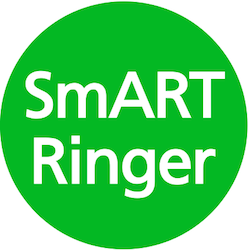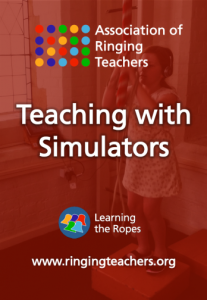Many ringers just think of simulators as an expedient, allowing practice without annoying the neighbours. However, they offer a lot more. Indeed, the use of sensors combined with sophisticated software allows all kinds of practice and learning, whether individually or as a band, that are just not possible with real bells.
Graham Nabb, with advice from other users and developers, has produced an excellent introduction to the subject of simulators detailing how each stage of learning can be supported. He introduces the different conformations of simulators, the hardware and software available, a brief guide to silencing a bell, and importantly, suggested uses of the simulator at all the different stages that new ringers go through. Graham goes on to mention further activities, including the use of simulators with change ringing on handbells, the use of multiple workstations and headphones and with dumb bells, concluding with a list of useful sources on the web for details of specific products.
I loved the list of handling/listening exercises for ringers who are approaching Learning the Ropes (LtR) Level 2, including “Whole pull and stand, Set every 3rd stroke, Twinkle Twinkle Little Star, Lottery, Fade out…” This last exercise is described elsewhere in the book as being like the game in “I’m sorry I haven’t a clue” where the ringer has to ring one bell to an even rhythm then the sound is turned down for several blows. Will they have maintained the beat when the sound is turned back up?
The booklet has a clear, concise style without much elaboration. It packs a lot of information and ideas into an eighteen-page booklet. Sometimes ringing techniques can be difficult to describe, but Graham has structured the information well and set it out attractively with some screen shots and useful photographs.
Simulators are increasingly used in training in English change ringing. The available hardware and especially the software keep evolving, so I imagine some of the information in the booklet will need revision to keep it up to date. However, the emphasis is on the many ways simulators can be used.
Certainly we have found the simulator in our own tower absolutely invaluable in teaching our youngsters. It allows, for example, basic handling lessons on the trebles simultaneously with call changes or more on the middle six. Learners practise rounds early on just by listening. And, as Graham points out, there’s scope for fun exercises!
This booklet sets out a good overview of the basic choices currently available and how a simulator can best be used in training ringers. It is a useful source of information for anyone wishing to install a simulator in the tower, with plenty of suggestions on how to exploit one. I see that the ART Awards Scheme will include an award for Innovation in Effective Use of Technology – this booklet should give you some ideas.
The all new ‘Teaching with Simulators’ booklet is available to buy now. At £3.50 inc. P&P, it’s a great value resource for you and your tower.



The booklet on Simulators sounds good, and it has reminded me about Belfree. After the demo at a church in Leicester, we ordered a 6-bell system at the end of Feb. We are still waiting delivery, in spite of two emails requesting an update. Can anyone tell me what is going on with Belfree?